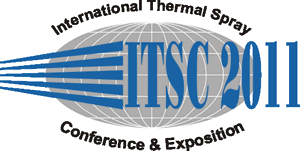
|
2546 |
|
Tuesday, September 27, 2011, Saal C2.1 2:50 PM Nanomaterial Coatings 1 |
|
Development of composite coatings composed of a stainless steel matrix and tungsten carbide nano-inclusions by plasma spraying |
|
Karine Wittmann-Ténèze / CEA Le Ripault, France Jean-Michel Pereira / CEA, DAM, LE RIPAULT, France Patrick Brelivet/ CEA, DAM, LE RIPAULT, France Luc Bianchi/ CEA, DAM, LE RIPAULT, France Roman Vert*/ CEA, France |
|
Tungsten-based cermets are well-known engineering materials finding applications in aerospace, nuclear equipment, and many other fields. Plasma spraying is an interesting industrial process to manufacture those refractory materials. Original hard coatings for wear protection composed of a stainless steel matrix and inclusions of tungsten carbide (WC) nanoparticles were developed by plasma spraying. To produce the coatings, two precursors were injected separately in the plasma jet: a stainless steel micrometric powder was classically accelerated into the plasma jet with a carrier gas and WC nanoparticles were injected with a carrier liquid, like in the so-called process suspension plasma spraying. One of the challenges is to maintain the WC phase in the deposit, without decomposing the carbide into brittle W2C, W3C, and metallic tungsten, phenomenon usually obtained with the thermal spraying techniques. Another one is to be able to include homogeneously the carbide nanoparticles in a sufficiently dense stainless steel matrix. Coatings with different WC contents were deposited on stainless steel substrates and investigated with respect to microstructure by optical and scanning electron microscopy, porosity level using the Archimedean method, phase composition by X-ray diffraction and Vickers micro-hardness. Results showed that coatings consisting of a stainless steel matrix containing inclusions of carbide nanoparticles can be produced by plasma spraying. The phase composition analysis indicated that nanoparticles are largely composed with the WC phase and also with a small amount of WC1-x phases. A slight increase of the porosity level was measured for coatings containing nanoparticles, compared to the matrix, probably due to the cooling effect of the WC carrier liquid on the in-flight characteristics of the stainless steel particles. Micro-hardness measurements gave similar values for coatings containing or not the nano-sized particles, showing that the amount of WC including in the samples was insufficient to improve the hardness property. |